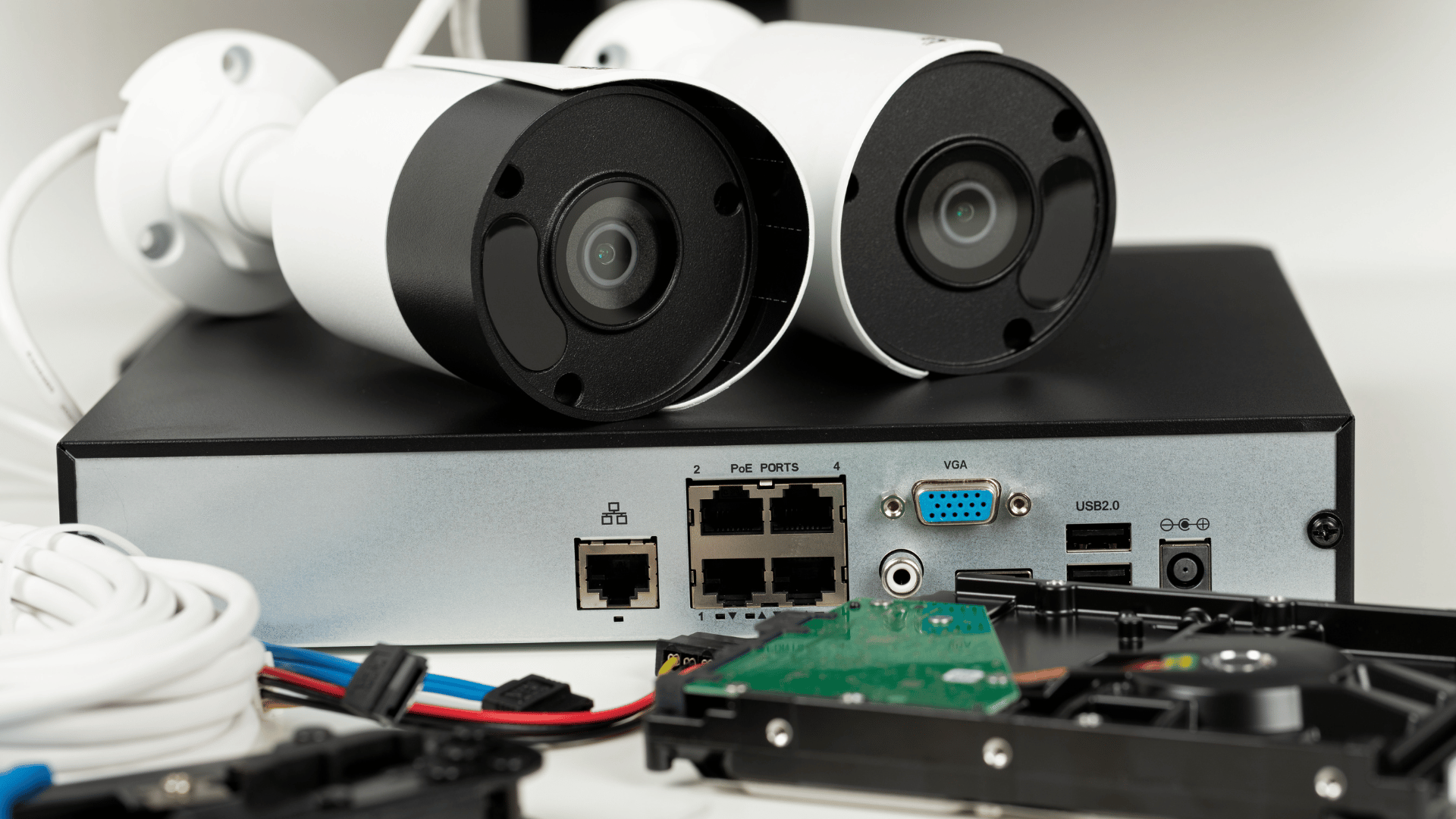Appearance-wise, it may seem that CCTV systems haven’t changed much over the years. When you walk into a grocery store, the bullet or dome cameras you see today might look quite similar to those from 20 or even 30 years ago. However, beneath the surface, CCTV systems have seen numerous technological advancements and breakthroughs. From reel-to-reel tapes and VHS tapes to digital recordings, let’s explore the evolution of video surveillance systems and see how they’ve changed over time.
What is CCTV?
CCTV, short for Closed-Circuit Television, is a system which uses video cameras to transmit video signals to a designated location, such as a monitor or recording device. Unlike broadcast television, where signals are openly transmitted to anyone with a compatible receiver, CCTV operates on a closed circuit. This means that the video signals are restricted to a limited area or network. In other words, the video feed is not able to be viewed by the general public (Britannica).
History of CCTV Systems
CCTV systems have undergone a remarkable evolution since they first appeared. Let’s take a look into the history of CCTV systems and see what the future might have in store.
1920s – 1940s: Initial CCTV Systems
In 1927, Russian inventor Leon Theremin pioneered the first CCTV system, consisting of a camera and a shortwave radio. This system, which had a resolution of 100 lines, was installed at the Kremlin in Moscow to surveil incoming visitors. The next notable CCTV system came from German engineer Walter Bruch in 1942, which was used by the German military to monitor rocket launches from afar.
1950s: Civilian CCTV Systems
After the war, CCTV systems became commercially available in the United States for civilian use. However, due to their large size and exorbitant cost, they remained scarce outside of high-security establishments such as banks. The analog cameras experienced a resolution upgrade to 240 lines, but similar to earlier systems, there was no means for recording and storing video footage. This meant that constant monitoring in real-time was required.
1960s: Reel-to-Reel CCTV Systems
In the 1960s, reel-to-reel recording became more prevalent, enabling the recording of surveillance footage. In this setup, the camera’s video signals were recorded onto magnetic tape reels, which could be played back. However, these tape reels had to be manually changed, which was a time-consuming and laborious process. An operator had to thread the tape from the tape reel through the recorder and replace it with an empty tape reel once it reached capacity. While the adoption of CCTV systems increased for public surveillance during this time, it was primarily limited to public areas rather than private settings.
1970s – 1980s: VCR CCTV Systems
Video Cassette Recorder (VCR) technology became widely accessible in the 1970s, making it easier to record footage. With VCRs, CCTV systems could operate without constant supervision. Although these systems were less labor-intensive than reel-to-reel recording, VHS tapes still needed to be manually replaced every few hours. Moreover, storing recordings for extended periods meant having a tape library, which took up considerable space. As a result, many users opted to record over old tapes, which would wear them down. Despite these challenges, CCTV systems became more cost-effective and gained popularity among businesses.
1990s – 2000s: Digital CCTV Systems
During the 1990s, the advancement of computer technology gave rise to Digital Video Recorders (DVRs). These devices converted the cameras’ analog video into digital format and compressed it for storage on a hard disk. This innovation marked a significant milestone for CCTV systems, allowing users to record continuously for long periods of time without intervention. Compared to VCRs, DVRs were much more efficient, while digital cameras delivered superior picture quality. Digital multiplexing was also becoming more accessible at this time. With this technology, multiple CCTV camera feeds could be viewed at once through a single monitor.
2000s – 2010s: Network CCTV Systems
As digital CCTV systems gained widespread popularity, network IP systems emerged. In these systems, cameras capture video, which is encoded and processed within the camera itself. The footage is then transmitted to Network Video Recorders (NVRs) over networks, like Local Area Networks (LANs) or the internet. IP CCTV systems offer numerous advantages over digital analog systems, including higher resolutions, scalability, and remote accessibility, allowing users to view footage from anywhere with an internet connection.
2010s – Present: Cloud-Based CCTV Systems
IP systems laid the groundwork for the integration of cloud-based solutions into CCTV technology, enabling remote access and storage of surveillance footage on secure servers hosted in the cloud. This eliminates the need for on-site storage infrastructure, reducing hardware costs and maintenance while offering greater flexibility and scalability. Furthermore, the cloud’s powerful processing capabilities have allowed CCTV systems to leverage artificial intelligence and machine learning algorithms. These algorithms, known as video analytics, automate monitoring by identifying security threats such as trespassing and suspicious objects within video data.
Get the Latest CCTV System at 2M Technology
The evolution of CCTV systems over the decades has been marked by significant advancements in technology, transforming the landscape of surveillance and security. From the early days of analog systems to the digital era of IP cameras and cloud-based solutions, CCTV technology has continuously adapted to meet the ever-growing needs of society. With new developments in technology happening each day, the future holds exciting possibilities for further innovations in CCTV systems.
At 2M Technology, we offer the latest in CCTV technology. Whether you’re looking to upgrade an existing system or build a comprehensive security solution from scratch, we’re here to assist you every step of the way. Reach out to the 2M Technology sales team today at +1 (214) 988-4302 or at sales@2mtechnology.net.

